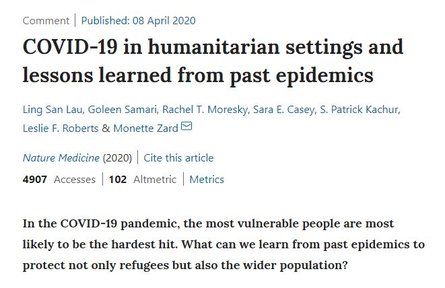
In the COVID-19 pandemic, the most vulnerable people are most likely to be the hardest hit. What can we learn from past epidemics to protect not only refugees but also the wider population?
Although World Health Organization Director-General Tedros Adhanom Ghebreyesus has urged a “whole-of-government, whole-of-society approach” to COVID-19, displaced populations, including refugees, have been stigmatized, scapegoated and neglected in the emergency response. These populations confront substantial vulnerabilities in the context of COVID-19. They often experience substandard living conditions, overcrowding, limited access to safe water and sanitation, and poor health and nutrition, thus substantially increasing their risk of infection. In addition, they may face greater difficulties than the general population in accessing health services1 and may disproportionately bear the burden of pandemic-control measures, including restrictions on movement and border closures. In humanitarian contexts, conflict, political instability, resource limitations, poor governance, and weak health systems and public-health infrastructures further constrain the ability to detect and respond effectively to outbreaks.